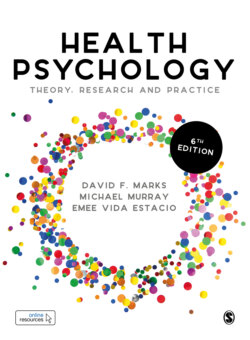Читать книгу Health Psychology - Michael Murray - Страница 78
На сайте Литреса книга снята с продажи.
Social Capital
ОглавлениеThere is increasing interest in social capital as an aid to explaining social variations in health. The concept was especially promoted by Robert Putnam, who used it to characterize civic life in Italy (Putnam et al., 1993). He argued that certain communities had higher degrees of civic engagement, levels of interpersonal trust and norms of reciprocity. Together, these characteristics contributed to a region’s degree of social capital. Putnam (2000) subsequently explored the extent of social capital in the USA, and argued that over the past generation there has been a steady decline in participation in social organizations and thus a steady decline in social capital. An important distinction that Putnam (2000) makes is that between ‘bridging’ and ‘bonding’ social capital. ‘Bridging’ social capital refers to links with diverse groups and provides an opportunity for community members to access power and resources outside their community, whereas ‘bonding’ social capital refers to inward-looking social ties that bond the community together. Campbell (2004) stresses that both forms of social capital are essential in building healthy communities.
There has been a series of studies investigating variations in social capital and its connection with health. For example, in a national cohort of Open University adults in Thailand (n = 82,482), self-assessed health was shown to be significantly associated with social trust and social support (Yiengprugsawan et al., 2011). Gilbert et al. (2013) conducted a meta-analysis of social capital, self-reported health and mortality. A total of 39 studies were included in the analysis. Findings suggested that high social capital can increase the odds of good health by 27%. Furthermore, social capital variables, such as reciprocity and trust, increased the odds of good health by 39% and 32%, respectively.
Studies have explored the pathways linking social capital with health. In a study with church-going Latinas in California, Martinez et al. (2013) explored the relationship between leisure/physical activity and social cohesion. Leisure/physical activity and neighbourhood cohesion were assessed at baseline, three months and six months after the implementation of a promotora-delivered pilot intervention. Promotoras are community health leaders who help with the dissemination of health information to community members. They are locally based and have very similar characteristics to the target population. They were given training on how to lead walking groups, general information on the health benefits of physical activity, and information on the barriers to and facilitators of physical activity, especially among the Latino community. Evaluation of this intervention showed that social cohesion was an important predictor of physical activity (i.e., social cohesion at three months can predict levels of physical activity at six months). The authors suggested that it is possible that the promotoras enhanced social cohesion by providing participants with a sense of belonging and friendship while facilitating these activities. Considering the effectiveness of this approach in promoting leisure-time physical activity, it was argued that intervention coordinators can learn to maximize the benefits of working with community-based facilitators to promote health and well-being.
Participatory and community-based approaches can help to address issues related to poverty and health by empowering individuals and communities more widely (Ng, 2010). For example, Lawson et al. (2014) explored the benefits of participating in a community arts project among people living with mental health problems. The community members selected artwork and curated a public exhibition. Interviews suggested that participants had improved self-worth and lost some of the stigma associated with mental health issues. The project also offered a sense of belonging and helped participants to develop new knowledge and skills.
Scheib and Lykes (2013) facilitated a participatory action and photo elicitation research project in post-Katrina New Orleans from 2007 to 2010. Eleven African-American and Latina women took part in the project. Findings suggested that in developing ties and new ways to respond to the consequences of an ‘unnatural disaster’, the participants developed intra- and inter-group empathy and the capacity to critically examine the social and structural determinants of health inequities.
Social capital, or its lack, has been linked with health inequalities. Uphoff et al. (2013) systematically reviewed evidence on the associations and interactions between social capital and socio-economic inequalities in health. Of the 60 studies that met the inclusion criteria, 56 showed significant correlations between social capital and socio-economic inequalities in health. Twelve studies showed how social capital can act as a buffer against the negative effects of low SES on health, while five concluded that social capital has a stronger positive effect for people with a lower SES.
There has been a wide range of criticisms of social capital as an explanatory concept (e.g., Lynch et al., 2000). These include confusion over what exactly the term implies, debates over ways of measuring it, and ignorance of the broader political context. Bjørnskov and Sønderskov (2013) argued that social capital is not a good concept since contemporary research either conceptualizes it as several distinct phenomena or constructs it using other terms. Baum (2000: 410) also emphasizes caution in the use of the concept in that ‘there are dangers that the promotion of social capital may be seen as a substitute for economic investment in poor communities particularly by those governments who wish to reduce government spending’.
